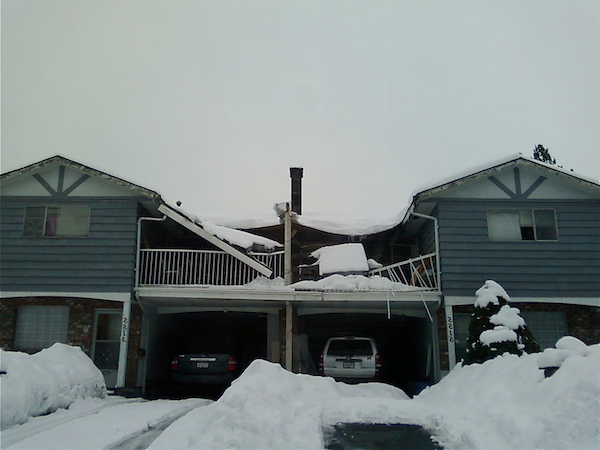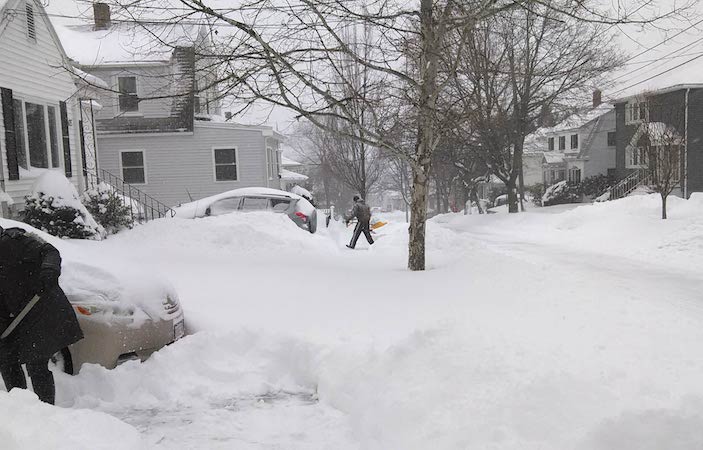Record Precipitation
While the West Coast is mired in what could wind up being the worst drought in 500 years, the East Coast is experiencing its own share of abnormal precipitation, albeit to the opposite effect as here in California. Those on the opposite coast and their homes are bearing the full brunt of one of the coldest Februaries of all time. The only problem is, some of their houses are buckling under the weight of heaps of snow.
Snow Accumulation’s Architectural Consequences
A recent article in Architect Magazine detailed the full extent of the damage that Boston has sustained through over a full month of heavy winter weather. Both municipal and residential buildings have suffered from the weather, with heavy loads of snow causing roofs to leak and cave in. The article estimates that over six feet of snow have been dropped on Boston since January (eight feet total this winter). The possibility for roof damage was so prevalent that schools like Somerville High School closed at the mayor’s behest.
The natural response is, of course, to remove the snow when it accumulates to a level deemed unsafe to the integrity of the roof. However, there are more factors that should be taken into account, including the roof’s angle and material, the type of snow currently resting on the roof, its distribution, etc. One of the biggest threats to the integrity of a roof is when snow accumulates unevenly across a flat roof, putting extra weight in certain places and creating more of a risk for collapse than evenly-distributed accumulation.

An unlucky homeowner woke up to a roof collapsed under heavy snow load.
To try and avoid this problem of rooftop snow buildup, there are certain measures one can take. Although it might not be possible in certain areas, finding/building a house with a steep-pitch gable roof, especially one designed with a smooth, non-abrasive material, will make it easier for gravity to pull snow off of a roof before it freezes and starts to catch additional snow. An angle of 30˚ or more should do the trick.
For more tips on guidelines for snow safety, check out FEMA’s Snow Load Safety Guide.
